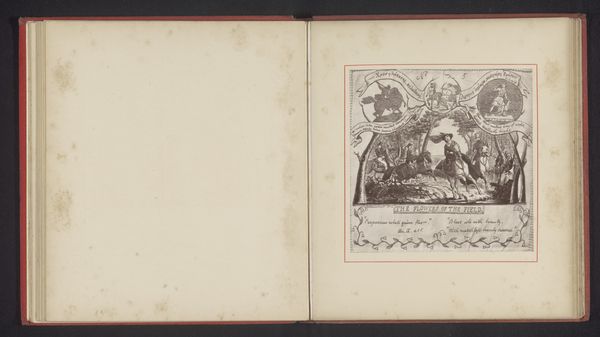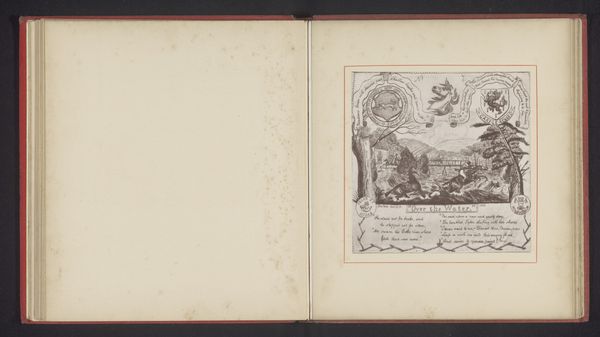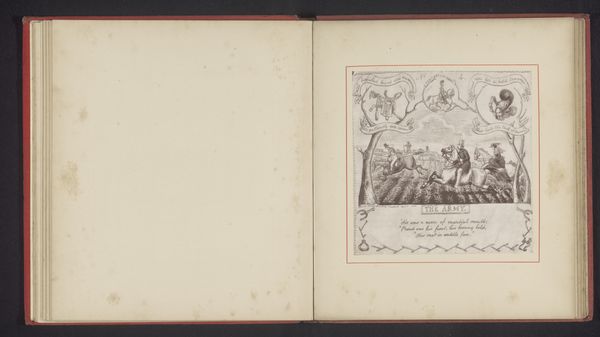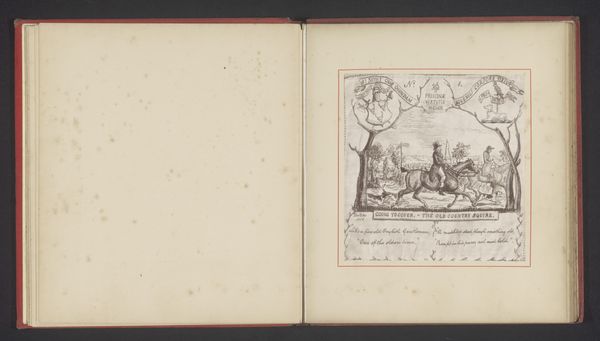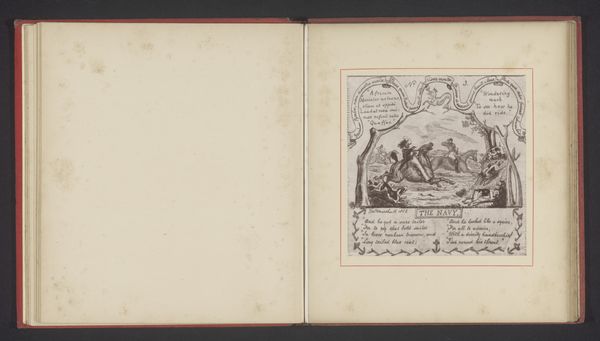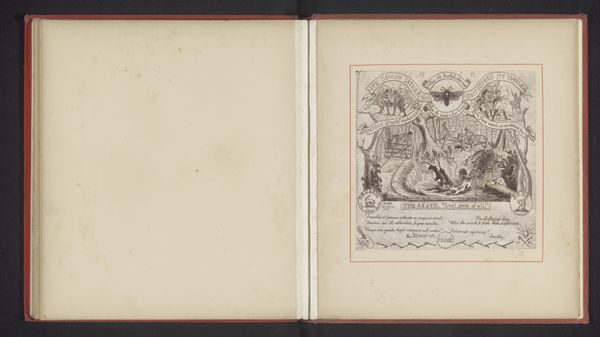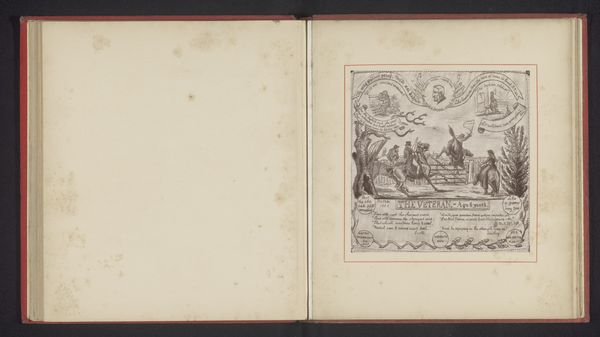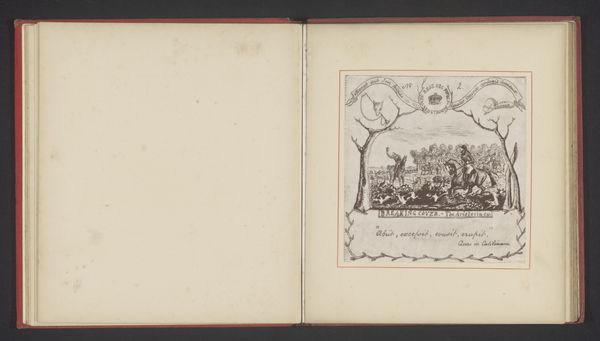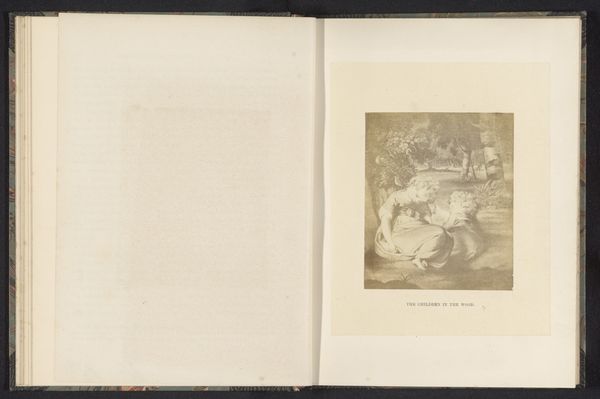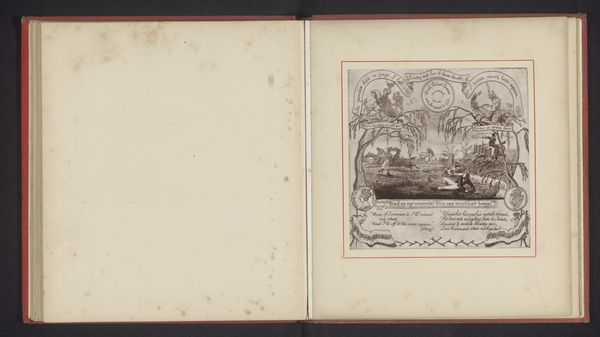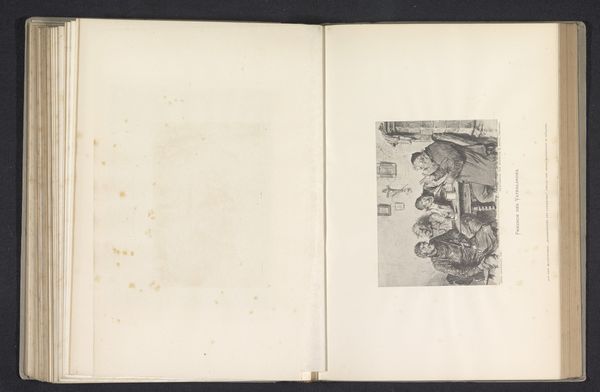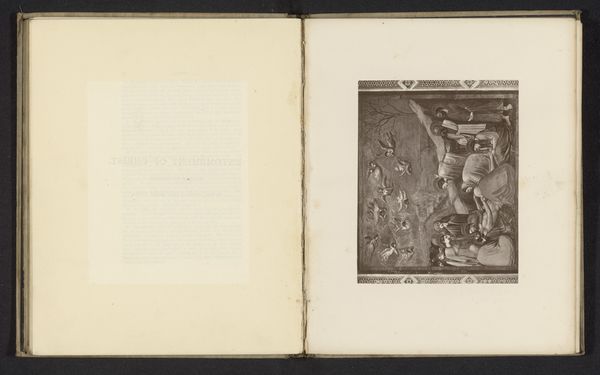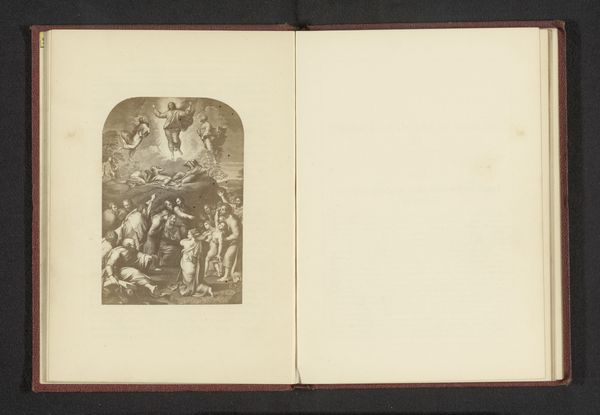
Fotoreproductie van een tekening door Thomas Mervyn Bouchier Marshall, voorstellend mensen te paard omringt door vanitas symbolen before 1885
0:00
0:00
drawing, coloured-pencil
#
drawing
#
fairy-painting
#
coloured-pencil
#
narrative-art
#
vanitas
#
coloured pencil
#
history-painting
Dimensions: height 171 mm, width 167 mm
Copyright: Rijks Museum: Open Domain
Curator: Looking at this fascinating reproduction, created before 1885, we see a drawing by Thomas Mervyn Bouchier Marshall depicting figures on horseback amidst what appear to be vanitas symbols. It's executed using colored pencils. Editor: Immediately, the composition strikes me as very deliberately arranged, almost staged. The use of stark imagery—skulls, radiant suns, noble equestrians—gives it a potent symbolic weight. There is an air of somber reflection, no? Curator: Yes, and if we consider Marshall's social context, we can surmise how readily vanitas themes would have been accessible, even embraced, through material culture such as prints, tokens and keepsakes as well as more established means of making art such as painting, sculpture, etc. How was an artist meant to earn a living during this time? Where did colored pencils fall into that framework of necessity? What kind of patronage or cultural infrastructure allowed for the production and then dissemination of this work? Editor: The distribution speaks directly to the artist's choices and creative vision in realizing these images. Notice the line work? There is precision and control combined with expressive use of tone, all orchestrated to communicate complex ideas surrounding life, death, and mortality, but the artist makes some fairly specific material choices that also dictate what those representations mean. The framing and surrounding emblems are like architectural molding—visual motifs working on themes like, time slips by, be mindful! Curator: Indeed. The layering of imagery encourages multiple interpretations. One could even explore the semiotics of horsemanship within British identity during that period. What did it mean for these elites on horseback to associate so publicly with the motifs we generally think of as representative of morality? Who produced these specialized pigments and pencils? Who consumed such images, and in what spaces? Editor: Considering this piece more deeply reveals the rich relationship between symbols. Seeing "ashes" beside "ore," along with death beside an angel and a radiant sun, you can almost sense Marshall urging the viewer to find beauty in life, but be constantly aware that life's ore turns into ashes so very quickly. Curator: Thinking about the work within the economic structures of art making gives the artwork itself another layer of complexity that feels impossible to detach from this potent allegory about life and death, power, and mortality. Editor: Yes, the visual rhetoric of art-making itself amplifies the drawing's meaning. It encourages the audience to be mindful, in order to live a noble and conscientious life.
Comments
No comments
Be the first to comment and join the conversation on the ultimate creative platform.
